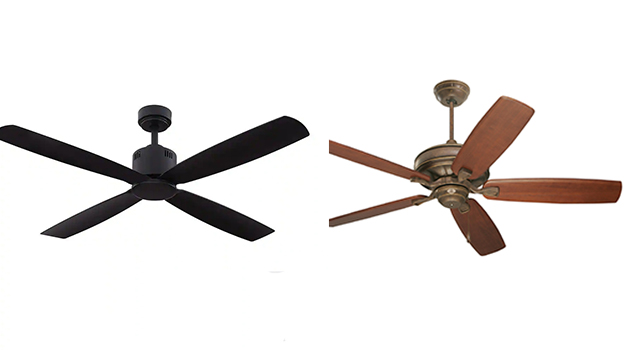- Smart Watch Payments and Digital Wallets in the Philippines - June 8, 2023
- Front-Load vs. Top-Load Washing Machines - May 25, 2023
- Pros And Cons Of Wireless Charging Power Banks - May 10, 2023
Last Updated on
Ceiling fans are a great way to add both form and function to any room. Not only do they provide an aesthetic boost, but ceiling fans can also help reduce energy costs by pushing warm air down during the cold months and pushing cool air up in the summer, giving you the ideal air circulation without having to resort to air conditioners. With so many styles, sizes, mounting types, and features (lights, remote control, etc.) available today, it can be tricky to know which one is right for you. This guide will take you through the process of selecting the right ceiling fan for your home. Let’s get started!
1. Ceiling Fan Location:
The first thing you need to consider when buying a ceiling fan is where it will be located in your home. Will it be in an open indoor space such as a living or family room, or will it be in an enclosed space such as a bedroom or bathroom? The size of the fan and the number of blades needed depend on the location.
2. Ceiling Height:
The next consideration is the ceiling height. Low ceilings require ceiling fans that are closer to the ground and hug the ceiling, while higher ceilings may accommodate larger ceiling fans with longer down rods.
3. Ceiling Fan Sizes:
Ceiling fan sizes are usually measured by their diameter (in inches). Most indoor ceiling fans range from 30” for small rooms to 52” for large rooms, but some extra-large models can reach up to 60” in diameter.
4. Ceiling Fan Mounting Type:
This is an important factor during the ceiling fan installation. There are three types of mounting for ceiling fans: close-to-ceiling, down-rod, and hugger. Close-to-ceiling models are best for low ceilings, while down rods can extend up to 60” from the ceiling and are ideal for tall ceilings. Hugger models mount directly against the ceiling, making them a good choice for rooms with low ceilings.
5. Ceiling Fan Styles:
The style of fan you choose should match the decor of your room. Traditional styles include ornate designs with intricate details; transitional styles blend traditional and modern elements, and contemporary or modern styles feature sleek lines with minimal detailing.
6. Ceiling Fan Blades:
The number and size of ceiling fan blades affect airflow as well as the overall appearance of the fan. Most ceiling fans have three or four blades are best for most rooms, but some ceiling fans have five or six blades. The blade material also matters: Plastic ceiling fan blades tend to generate more warm air movement than wood blades, which offer a softer look and feel.
7. Ceiling Fan Lighting Features:
Most fans include lighting fixtures that can be controlled separately from the fan motor. Some ceiling fan light comes with integrated LED lights, while others allow you to choose your own bulbs for adjustable light intensity.
8. Ceiling Fan Accessories:
To complete your look, consider adding accessories such as blade guards and ceiling medallions (decorative trim around the base of the fan). You can also add a remote control to make operating your fan easier, especially on higher ceilings where a pull chain might not be enough.
How to Size a Ceiling Fan
To make sure you get the correct size of ceiling fan for your space, measure the length and width of the room in feet and then multiply them together to get the square footage. Then divide this number by 4 to get the ideal size of the fan (in diameter). For example, if your room is 10’ x 12’, it has an area of 120 sq ft. Divide this number by 4 and you will need a 30” ceiling fan which will give you adequate airflow.
Now that you know all there is to know about buying a ceiling fan, why not take advantage of all its benefits and dress up any part of your home? With the right fan, you can create a cozy atmosphere and save on energy costs!

